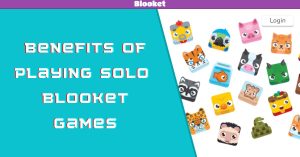In the world of digital learning, Blooket stands out as a fun and interactive platform. It’s a favorite among teachers and students alike because it turns educational quizzes into exciting games. One key feature that makes Blooket even more powerful is the ability to organize question sets with folders. This article will walk you through how to do this effectively, ensuring your Blooket experience is both smooth and enjoyable.
Introduction to Blooket and Its Benefits
Blooket is an online tool that combines learning and fun. It allows teachers to create question sets, which students can answer while playing various types of games. These games can be competitive or collaborative, making learning engaging and exciting. Imagine playing a game and learning math or history at the same time – that’s Blooket!
One challenge that comes with using Blooket is managing the many question sets you might create or collect over time. This is where organizing them into folders can be incredibly helpful. Folders in Blooket work just like folders on your computer; they help you group related question sets together. This makes it easier to find what you need when you need it.
Why Use Folders in Blooket?
Simplified Navigation
As you start using Blooket more frequently, you’ll likely create numerous question sets. Without folders, it can become overwhelming to sift through them to find the right set. Folders help you keep everything organized, so you can quickly locate the specific question set you need.
Better Lesson Planning
Teachers often plan their lessons around specific topics or units. By using folders, you can group your question sets by subject, grade level, or any other category that fits your teaching style. This makes lesson planning much more straightforward. Instead of searching through a long list of question sets, you can open a folder dedicated to a particular topic and find all the related sets there.
Efficient Sharing
When sharing question sets with other teachers or students, having them organized into folders can be a lifesaver. It’s easier to share a folder of relevant question sets rather than sending each one individually. This ensures that the recipient gets a well-organized collection, ready to use.
Enhanced Collaboration
Folders can also improve collaboration among teachers. By organizing question sets into folders, you can easily share and work together on a group of related sets. This is especially useful for teachers working on joint projects or team teaching.
How to Create and Use Folders in Blooket
Step 1: Sign In to Blooket
First, go to the Blooket website and log in to your account. If you don’t have an account yet, you’ll need to create one. It’s free and only takes a few minutes. Once logged in, you’ll see your dashboard, where you can access all your question sets.
Step 2: Access Your Question Sets
On your dashboard, click on the “My Sets” tab. This will show you all the question sets you have created or saved. If you’ve used Blooket before, you might already have a few question sets here. If not, you can create new ones by clicking the “Create a Set” button.
Step 3: Creating a Folder
To create a folder, look for the “Create Folder” button on the “My Sets” page. It’s usually located near the top of the page. Click on this button, and a new folder will appear in your list. You’ll be prompted to name your folder. Choose a name that reflects the content you plan to store in it. For example, if you’re organizing math question sets, you might name it “Math Sets”.
Step 4: Adding Question Sets to Folders
Once you have created a folder, you can start adding question sets to it. Find the question set you want to add and look for the “Move to Folder” option, which is often represented by an icon of a folder. Click on this option, and a list of your folders will appear. Select the folder you want to move the set to, and it will be added to that folder.
You can also create subfolders within folders. This is helpful for organizing large amounts of question sets into more specific categories. For example, within your “Math Sets” folder, you could create subfolders like “Algebra” or “Geometry”.
Step 5: Managing Your Folders
You can always edit or delete folders as needed. To do this, go to the “My Sets” page and find the folder you want to manage. Click on the folder to open it, and you’ll see options to rename or delete the folder. Be careful when deleting a folder, as this action might also delete all the question sets within it.
Step 6: Searching Within Folders
Blooket also allows you to search within your folders. If you have many question sets in a folder, use the search bar at the top of the folder view to quickly find the set you need. This can save a lot of time, especially if you have a large collection of sets.
Tips for Effective Folder Organization
Use Clear and Descriptive Names
When naming your folders, be as clear and descriptive as possible. This will help you quickly identify the contents of each folder. Instead of vague names like “Set 1” or “Folder A”, use names like “Grade 7 Science” or “History Quiz – American Revolution”.
Keep Your Folders Updated
Regularly review and update your folders. As you create new question sets or as your teaching needs change, move your question sets around or create new folders. This will ensure that your Blooket account remains organized and useful.
Avoid Overcrowding
While it’s tempting to put all your question sets into one folder, try to avoid overcrowding. If a folder becomes too full, it can be just as difficult to find what you’re looking for as if you had no folders at all. Use subfolders to break down large collections into more manageable groups.
Collaborate and Share
If you’re working with other teachers, consider sharing your folders with them. This can make it easier to collaborate and share resources. Blooket allows you to share entire folders, making it simple to provide your colleagues with all the question sets they need.
Use Consistent Naming Conventions
Establish a consistent naming convention for your folders. This means using the same structure or pattern for naming all your folders. For example, you might always start with the grade level followed by the subject, like “Grade 8 – Math” or “Grade 7 – Science”. Consistent naming helps keep everything orderly and easy to navigate.
Advanced Tips for Power Users
Integrate Folders into Your Teaching Strategy
Think about how you can integrate Blooket folders into your overall teaching strategy. For instance, you could create folders for each unit of your curriculum and then populate them with question sets that align with your lesson plans. This makes it easy to switch from one topic to another without spending time searching for resources.
Use Folders for Different Teaching Modes
Consider using folders to separate question sets for different teaching modes. For example, you might have one folder for question sets used in competitive games and another for sets used in collaborative or team-based activities. This can help you quickly choose the right type of question set based on how you want to conduct your class.
Archive Old Sets
If you have question sets that you no longer use but want to keep for future reference, consider creating an “Archive” folder. This keeps your main folders clean and focused on the question sets you use regularly while still preserving older sets that might be useful later.
Share Folders with Students
Blooket allows you to share folders directly with students. This can be useful if you want them to review certain question sets outside of class. By sharing a folder, you can provide students with a curated collection of resources that they can access anytime.
Explore Public Sets
Blooket also has a library of public question sets created by other users. You can search this library for sets that match your needs and add them to your folders. This can be a great way to expand your collection without having to create every set from scratch.
Conclusion
Organizing your Blooket question sets with folders can greatly enhance your experience on the platform. It simplifies navigation, improves lesson planning, and facilitates collaboration and sharing. By following the steps outlined in this guide and using the tips provided, you can keep your Blooket account well-organized and ready for any teaching challenge.
Remember, the key to effective organization is consistency. Regularly update your folders and question sets, and always use clear, descriptive names. With a little effort and planning, your Blooket question sets will be neatly organized and easily accessible, making your teaching more efficient and enjoyable.




